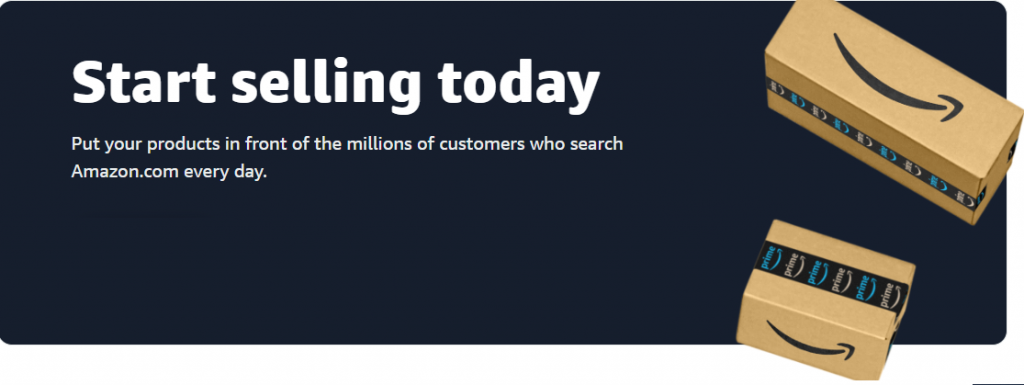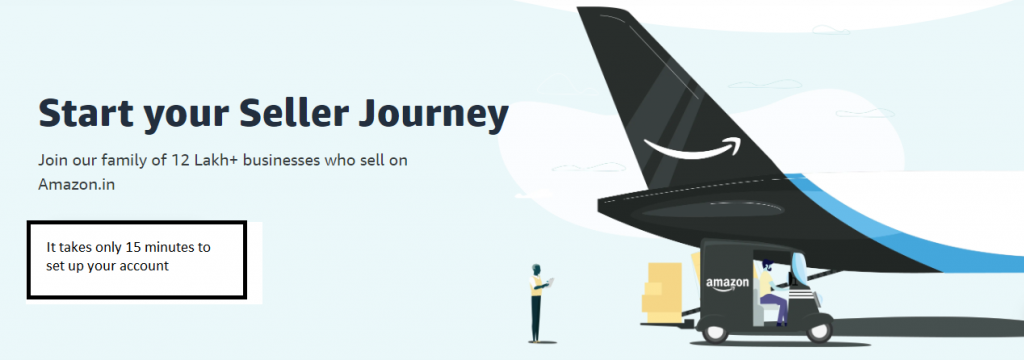In the bustling landscape of e-commerce, Amazon stands as an undeniable titan, commanding a significant share of the global marketplace. For entrepreneurs and businesses in India, leveraging Amazon's vast reach and infrastructure offers unparalleled opportunities for growth and expansion.
However, amid the allure of reaching millions of customers at the click of a button, lies a complex web of charges that sellers must navigate to thrive in this competitive ecosystem.
In this comprehensive guide, we embark on a journey to decipher the intricacies of Amazon seller fees, focusing specifically on the Indian marketplace. From referral fees, shipping costs to GST implications, understanding and effectively managing these expenses are paramount for sellers looking to capitalize on the immense potential of Amazon's platform in India.
Navigating the costs of selling on Amazon in India requires a comprehensive understanding of the platform's fee structure and a strategic approach to managing expenses. By incorporating these fees into their pricing strategy, sellers can ensure they remain competitive while maximizing profitability in this dynamic marketplace.
Unraveling Amazon India's Fee Structure
To effectively understand the costs of selling on Amazon India, it's crucial to familiarize ourselves with the platform's fee structure. Amazon employs a multi-faceted approach to fees, encompassing several types of charges that sellers encounter throughout their selling journey.
-
Referral Fees Calculation (based on Category):
The referral fee on Amazon India varies depending on the product category. A referral fee in India is a commission charged by Amazon to sellers for each item sold on their platform. This fee is calculated as a percentage of the total sale price (excluding taxes and shipping) and varies depending on the product category. When a seller lists a product on Amazon and it is sold, Amazon deducts the referral fee from the seller's earnings before disbursing the remaining balance.For example, if the referral fee for a particular category is 5% and a seller sells an item for ₹1000, the referral fee charged by Amazon would be ₹50 (5% of ₹1000). This fee contributes to covering the cost of providing services such as maintaining the platform, facilitating transactions, and driving traffic to sellers' listings.
Please note that it's essential to refer to Amazon's official fee schedule or seller portal for the most up-to-date information and specific rates for each category. Additionally, certain subcategories or specific types of products within each category may have different referral fee rates.
-
Closing Fees Calculation (based on product price):
The Closing Fee is applied upon the sale of your product on Amazon, determined by the price range of the item. Additionally, this fee is subject to variation depending on the fulfillment channel selected for the product.
-
Weight Handling Fees (Shipping Fees) Calculation
If you opt for Easy Ship or Fulfillment by Amazon (FBA), Amazon handles the delivery of your products to the customer and applies a corresponding fee. Conversely, if you opt for Self-Ship, you'll be responsible for covering the shipping costs and arranging delivery through a third-party courier service or your own delivery agents.
-
FBA & Easy Ship Shipping Fees
Total Shipping Fees = Fees based on item weight (refer size guidelines below) and distance (refer shipping regions below)
Example 1: if an item (containing a book) weighing 700 gms is shipped from Delhi to Chandigarh (same region, but different city, i.e. Regional shipping) through FBA then Shipping or Weight handling Fees = ₹ 40 + ₹ 17 = ₹ 57
Example 2: If an item weighing 3.5 kg (containing an electronic item) is shipped by Easy Ship from Banalore to Shillong (across region, i.e. national shipping), then Shipping fees = ₹ 72 + ₹25 + (₹27*3) = ₹178
Example 3: if an item weighing 19 kg (containing a chimney, which is a Heavy and Bulky item) is shipped from a Bangalore warehouse to a customer address in the same city (Local shipping), using Easy Ship, then shipping fees = ₹192 + (₹5*7) = ₹ 227Self Ship Fees
For Self-ship, there is no shipping fees levied by Amazon.in as you will have to take care of delivery yourself or with the help of a courier partner, who you will pay directly for the cost of delivery. -
Other Fees:
The majority of Amazon orders incur the three fees outlined above. Nevertheless, additional fees may apply depending on the Fulfillment Channel, program, or service utilized. Below are examples of such fees.
- Pick & Pack Fee (FBA Only): This fee is charged per unit sold at ₹13 for Standard, ₹26 for Overize, Heavy & Bulky items.
- Storage Fee (FBA Only): This is the fee charged for storing your products in the Amazon Fulfillment Center costing ₹45 per cubic foot per month.
- FBA Removal Fees (FBA Only): In case you wish to remove your products from the Amazon Fulfillment Center then this fees is applicable.
Calculating Total Selling Costs
To accurately gauge the profitability of selling on Amazon India, sellers must calculate the total selling costs associated with each product. By factoring in all relevant fees and charges, sellers can make informed decisions regarding pricing and product selection to optimize their financial outcomes.
Sample Calculation: Let's consider a hypothetical scenario where a seller lists a product with a selling price of ₹1000 in a category with a referral fee of 10% and utilizes FBA for fulfillment. In this case, the seller would incur a referral fee of ₹100 (10% of ₹1000) and additional fulfillment fees based on the item's dimensions and weight.
Strategies for Cost Optimization
While Amazon India's platform fees are non-negotiable, there are several strategies that sellers can employ to mitigate costs and enhance their profitability.
- Product Selection: Conducting thorough market research to identify high-demand products with favorable profit margins is essential for success on Amazon India.
- Pricing Strategy: Pricing products competitively while factoring in all associated costs is crucial for maintaining profitability. Sellers should leverage dynamic pricing tools to adjust prices in real-time based on market dynamics.
- Inventory Management: Implementing effective inventory management practices can help minimize storage fees and optimize stock levels to meet demand efficiently.
- Fulfillment Optimization: Evaluating the cost-effectiveness of FBA versus Fulfillment by Merchant (FBM) and optimizing fulfillment methods based on factors such as product characteristics and order volume can help reduce fulfillment expenses.
Monitoring Performance and Adaptation
Continuous monitoring of performance metrics is essential for success on Amazon India. Sellers should analyze key performance indicators (KPIs) such as sales velocity, profit margins, and return on investment (ROI) to identify areas for improvement and adaptation.
- Data-Driven Decision Making: Leveraging analytics tools provided by Amazon India can empower sellers to make informed decisions regarding pricing, inventory management, and advertising strategies.
- Continuous Optimization: By continuously refining their selling strategies based on performance insights and market trends, sellers can adapt to evolving customer preferences and competitive dynamics, maximizing their long-term success on the platform.
Frequently Asked Questions
1. How to calculate Referral Fees?
Total Referral Fees = Item price x Referral Fee percentage
For example, if you are selling a book priced at ₹ 450 and if the referral fee percentage for books category is 4%, the Referral Fees = ₹ 450 x 4% = ₹ 18
2. How to calculate Closing Fees?
FBA Closing Fees
Total Closing Fees = Fees based on item price & category
Example 1: if you are selling Books at ₹ 200 (Books category is in ₹0-250 exception list), closing fees = ₹ 12
Example 2: If you are selling Speaker at ₹ 450 (Speaker category is not in ₹251-500 exception list), closing fees = ₹ 20
Easy Ship & Self Ship Closing Fees
Total Closing Fees = Fees based on item price
Example 1: if you are selling Books at ₹ 200 shipped with Easy Ship, closing fees = ₹ 5
Example 2: If you are selling Speaker at ₹ 450 through Self ship, closing fees = ₹ 20
3. How to calculate Shipping Fees?
FBA & Easy Ship Shipping Fees
Total Shipping Fees = Fees based on item weight (refer size guidelines below) and distance (refer shipping regions below)
Example 1: if an item (containing a book) weighing 700 gms is shipped from Delhi to Chandigarh (same region, but different city, i.e. Regional shipping) through FBA then Shipping or Weight handling Fees = ₹ 40 + ₹ 17 = ₹ 57
Example 2: If an item weighing 3.5 kg (containing an electronic item) is shipped by Easy Ship from Banalore to Shillong (across region, i.e. national shipping), then Shipping fees = ₹ 72 + ₹25 + (₹27*3) = ₹178
Example 3: if an item weighing 19 kg (containing a chimney, which is a Heavy and Bulky item) is shipped from a Bangalore warehouse to a customer address in the same city (Local shipping), using Easy Ship, then shipping fees = ₹192 + (₹5*7) = ₹ 227
4. Self Ship Fees
5. How to calculate profit?
Step 1: Calculate the referral fees applicable
Step 2: Find the closing fees applicable
Step 3: Calculate the shipping fees applicable, or if you are using Self-Ship, check the cost of shipping
Step 4: Calculate Total Fees = Referral Fees + Closing Fees + Shipping Fees + Other fee (if applicable)
Step 5: Profit = Item Sale price – cost of product – Total Fees
Using Amazon Revenue Calculator
To calculate revenue from Amazon sales, you can use the Amazon Revenue Calculator. This tool helps estimate revenue based on factors like product price, shipping costs, Amazon fees, and other expenses.
Conclusion
Selling on Amazon India offers immense opportunities for entrepreneurs to expand their reach and grow their businesses. However, navigating the complexities of Amazon's platform fees requires careful consideration and strategic planning. By understanding the various costs involved, implementing cost optimization strategies, and continuously monitoring performance, sellers can position themselves for sustainable growth and profitability in the dynamic e-commerce landscape of India.
Are you ready to unlock the full potential of your Amazon India selling venture? Armed with insights into Amazon's platform fees and proven strategies for cost optimization, sellers can embark on a journey towards success, empowered to navigate the complexities of e-commerce and achieve their business goals.



1 Response to "Exploring the Costs of Selling on Amazon: Understanding Amazon Fees"
Thanks for elaborate explanation.